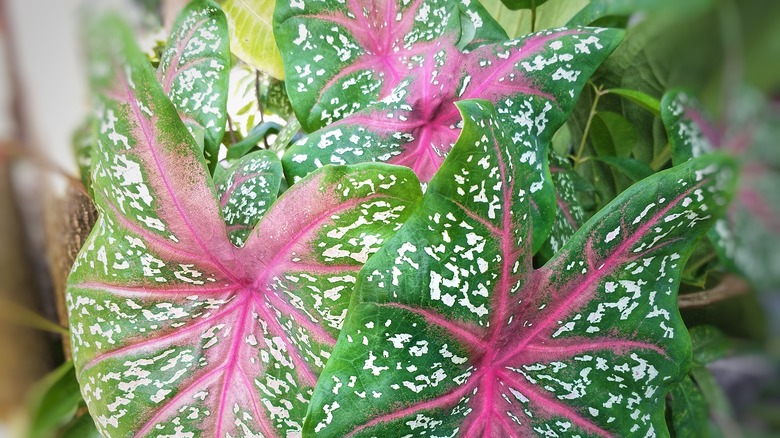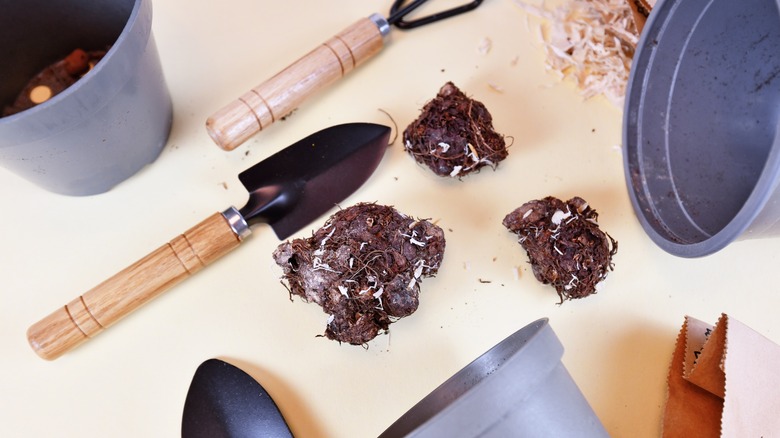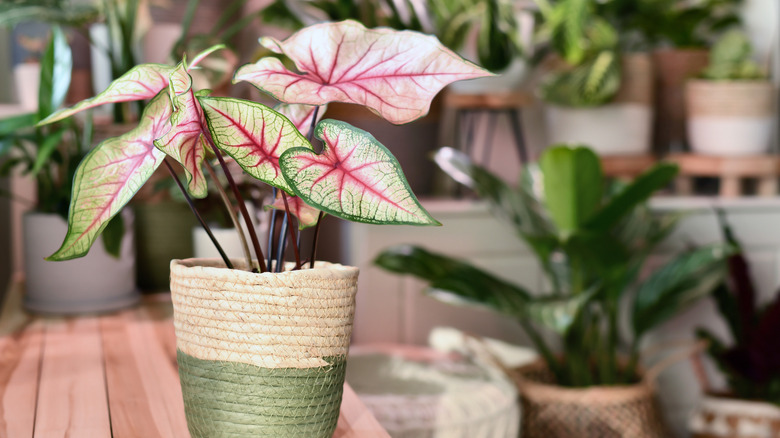Tips For Overwintering Caladiums To Save Them For Next Season
We may receive a commission on purchases made from links.
With their bold colors and tropical charm, caladiums (Caladium bicolor) may seem destined for a single summer — but a little winter TLC can keep these beauties coming back year after year. Caladiums' striking two-tone leaves make them a favorite foliage for outdoor beds, and one town in Florida — Lake Placid — even declared themselves the "Caladium Capital of the World." As a native of South America, caladiums struggle to make it through the winter in most of the United States. They can survive a winter in USDA zones 9 and warmer, but anything colder takes some extra care to guarantee their longevity.
Caladiums can be grown in pots both outdoors and inside, but they also provide a vivid filler for an outdoor bed. As a low-lying plant, they can be particularly striking at the border of a hedge or as a contrast with evergreen plants. If you're enjoying your beautiful leafy caladium foliage, don't worry. Whether you choose to pot your plants and keep them indoors for the winter or dig up the bulbs for replanting in the spring, you can save your caladiums to bring beauty to your garden the next year.
Dig up caladium bulbs for winter
If you want to grow caladiums again next year, you can dig up and save your bulbs. You will want to wait until after the first frost, when your caladium leaves begin to yellow and wilt. Then gently dig your caladium bulbs up, wiping off most of the soil. They can then dry out for a couple of weeks in a warm spot out of direct sunlight. Next, firmly grasp the dried-out leaves and clip them from the bulb using a pair of sharp pruners such as the Fiskars Bypass Pruning Shears. Then, you'll want to prepare a container to store your bulbs in. A shoebox filled with sphagnum moss, such as Legigo 10.5oz Premium Sphagnum Moss, works well. Choose a cool, dry indoor location, such as a garage shelf, and store your caladium bulbs until spring.
You can start your bulbs indoors in small pots about a month before the expected last frost in your area. You'll want to keep them indoors until the danger of cold temperatures is past and the soil is consistently 70 degrees Fahrenheit or warmer. In this case, the early bird definitely does not get the worm — replanting caladium bulbs too soon can actually harm them. For more ways to bring vibrant color to your garden, check out these 28 popular summer bulbs perfect for planting in your garden.
Move potted caladiums indoors for winter
If you'd rather preserve your entire plant — maybe you have a caladium with particularly beautiful or distinct foliage patterns — and you're growing it in a pot, you can bring it indoors to save it. You'll want to consider these crucial things before growing caladiums as an indoor houseplant. Choose a location that has lots of indirect sunlight and allow the soil to dry out. Just like your outdoor plants, the caladium's leaves will begin to yellow and die as the plant enters dormancy. This is to be expected, so don't worry about it. At this point, it's okay to stop watering. A few months of dormancy will help your caladium come back with gorgeous foliage come spring.
While early winter isn't the best time to repot houseplants, if you think your caladium has outgrown its pot, check out these tips for repotting your houseplants during the winter. Then, you'll want to begin watching for new growth in the spring. Once your caladium has woken itself up and started growing, you can help it along by beginning to water again. Following these steps will preserve your caladiums for years to come.


